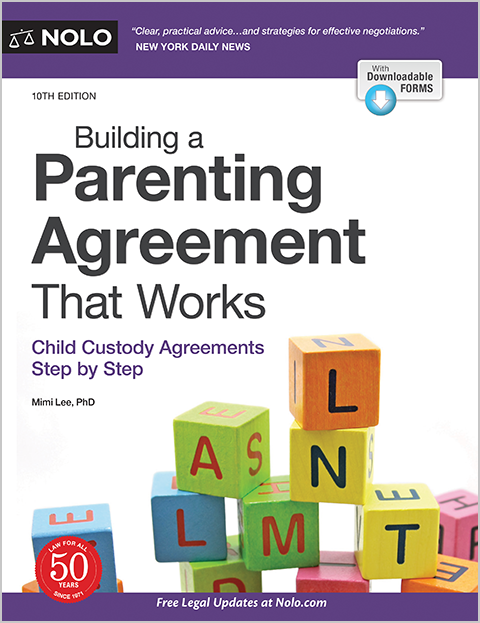Learn what a "no-fault" divorce is, how it's different from a fault-based divorce, and why you might want to choose one over the other.
When you file for divorce, you'll have to indicate on your divorce petition the reason why your marriage is ending—the "grounds" for the divorce. In some states, divorcing spouses have the option of filing either a "fault-based" or "no-fault" divorce. Other states allow only no-fault divorce.
The main difference between fault-based and no-fault divorce is that in a fault-based divorce, one of the spouses claims that something the other did caused the marriage to fall apart. In a no-fault divorce, on the other hand, neither spouse needs to allege a bad act on the part of the other.
Here are answers to some of the most common questions about grounds for divorce and related issues.
What is a "No-Fault" Divorce?
In a "no-fault" divorce, neither spouse has to prove that the other spouse did something wrong to cause the breakup. All states offer a no-fault divorce option, though the exact "grounds" (reasons) for the divorce vary state-to-state. For example, your state's no-fault grounds for divorce might be called:
- incompatibility
- irreconcilable differences, or
- irretrievable breakdown of the marriage.
Regardless of what the basis for no-fault divorce in your state is called, all of these mean simply that you and your spouse can't get along, and there's no hope of reconciliation. (Note that in a few states, you'll have to live apart for a period of time before a court will grant your divorce, even if it's a no-fault divorce.)
No-fault divorce is less expensive and less time-consuming than a fault-based divorce because the spouses don't need to prove marital misconduct for the court to grant the divorce.
Check out Divorce in Your State to find out more about the grounds for divorce where you live.
What is a "Fault" Divorce?
Courts will grant a request for a fault-based divorce if:
- state law allows fault-based divorce and
- at least one spouse alleges and proves that the other spouse's bad behavior led to the end of the marriage.
Only some states allow fault-based divorces.
Common fault-based grounds for divorce include:
- cruelty (inflicting unnecessary emotional or physical pain)—this is the most frequently used ground for divorce
- adultery
- abandonment for a specific amount of time
- incurable insanity
- confinement in prison for a set number of years, and
- physical inability to engage in sexual intercourse if a spouse didn't disclose it before the marriage.
The reasons why spouses choose fault-based divorce vary. Some people don't want to wait out the period of separation required by their state's law for a no-fault divorce. And, in some states, a spouse who proves the other's fault might receive a greater share of the marital property or more alimony. For many, though, the choice might be prompted by hurt feelings.
No matter what the reason for choosing a fault-based divorce, though, these divorces tend to be more expensive, as many spouses choose to hire a lawyer to help them present their evidence and convince the judge of their arguments.
What if both spouses are at fault? When both parties have engaged in behavior that qualify for a fault-based divorce, the court will grant a divorce to the spouse who is least at fault under a doctrine called "comparative rectitude." Years ago, when both parties were at fault, neither was entitled to a divorce. The absurdity of this result gave rise to the concept of comparative rectitude.
Can a Spouse Prevent a Court From Granting a Divorce?
A spouse can't prevent the court from granting a no-fault divorce. Objecting to the other spouse's request for divorce is itself an irreconcilable difference that would justify the divorce.
However, a spouse can prevent a fault divorce by convincing the court that the claims of fault are false. Or, a spouse might admit wrongdoing but present a defense or reason for their behavior, such as:
- Condonation. "Condonation" is someone's approval of another's activities. For example, the court might find that a wife who didn't object to her husband's adultery condoned it. If the wife sues her husband for divorce, claiming he has committed adultery, the husband could fight the divorce by arguing that she condoned his behavior.
- Connivance. "Connivance" is the setting up of a situation so that the other person commits a wrongdoing. For example, a judge might find that a wife who is going away for a week and invites another woman to stay at her house with her husband while she's gone connived his adultery. If the wife sues her husband for divorce, claiming he has committed adultery, the husband might argue as a defense that she connived—that is, set up—his actions.
- Provocation. "Provocation" occurs when one spouse encourages or prompts the other spouse to do a bad act. For example, if a husband seeks a divorce on the grounds that his wife abandoned him, the wife might defend against the divorce by claiming that the husband acted in a way that provoked the abandonment.
- Collusion. Some couples who live in a state that requires a separation period for a no-fault divorce might try to hurry the process by manufacturing a ground for divorce. This agreement to end run around the waiting period is called "collusion." If one spouse no longer wants a divorce (before the judge grants the divorce), the spouse could raise the collusion as a defense.
In practice, spouses rarely use these defenses. That's because proving a defense often requires producing witnesses or other evidence, and involves a lot of time and expense. And, in the end, these defenses usually fail: Most courts will eventually grant the divorce anyway because there is a strong public policy against forcing people to stay married when they don't wish to be.
Do I Have to Live in a State to Get a Divorce There?
All states have a residency requirement that one or both spouses must meet to be eligible to file for a divorce. Often, states require the filing spouse to be a state resident for at least three months or even as long as a year. The filing spouse must provide proof of residence for the required length of time. Only a few states have no time requirement for resident status (being a resident at the time you file is enough).
If you think that your spouse might file for divorce in another state, consider trying to be the first to file—in your own state. Rarely is a divorce settled in one court appearance, and if your spouse files elsewhere, you could rack up a lot of traveling expenses. Also, after the divorce is over, you must file any modifications to the divorce decree, including the property settlement agreement and arrangements for child custody and support, in the state that heard your divorce, which could require you to travel out of state for years to come. (Get more tips on the divorce process in How to Divorce.)
Can a Court Enforce an Out-of-State Divorce?
If one spouse meets the residency requirement of a state or country (such as having lived there from six months to a year), a divorce obtained there is valid, even if the other spouse lives somewhere else. The courts of all states will recognize the divorce.
However, a court's decisions regarding property division, alimony, custody, and child support might not be valid unless the court had jurisdiction over (the legal power to make decisions about) the nonresident spouse. The nonresident spouse falls under the court's jurisdiction when:
- the filing spouse personally serves the nonresident spouse with the divorce documents (meaning you deliver them into the person's hands)
- the nonresident spouse consents to jurisdiction (by either showing up at a court hearing or signing an affidavit of service acknowledging receipt of court documents), or
- the nonresident spouse obeys the rulings of the out-of-state court (for example, by paying court-ordered child support).
If you receive divorce documents from a foreign country, you might want to consult an attorney about whether your state court or the foreign court governs the issues. Whether a foreign court has the power to decide issues in your divorce depends on many factors, such as which particular country heard the case, where the parties lived and for how long, and whether children are involved.
Next Steps
If you're considering divorce, one of the first things you'll need to do is figure out whether your state only allows no-fault divorce. If it does, you don't have to worry about making a choice as to the grounds for your divorce. On the other hand, if the state allows no-fault divorce, you'll need to decide if it's worth claiming that your spouse is at fault for the marriage's end—or if it will just be easier to file a no-fault divorce.
To help you decide if a fault-based divorce is the right option for you, it's a good idea to get help from a divorce expert or a divorce attorney located in your area.

